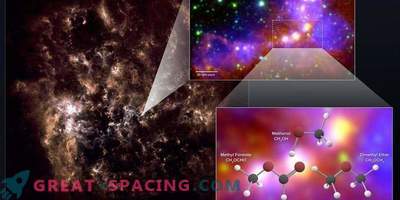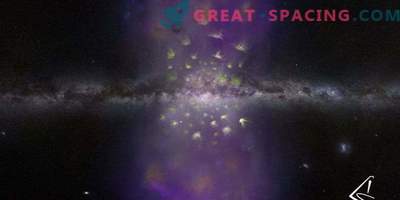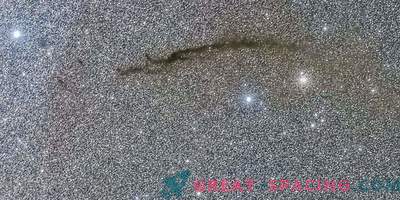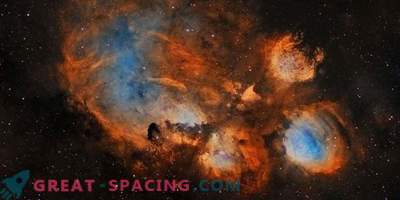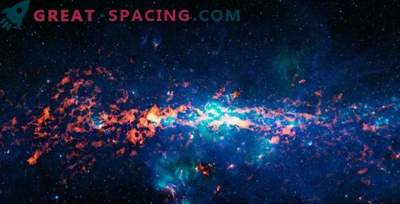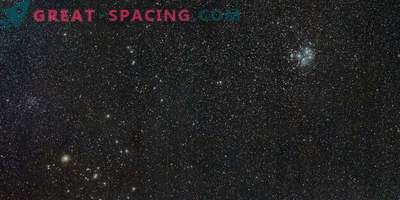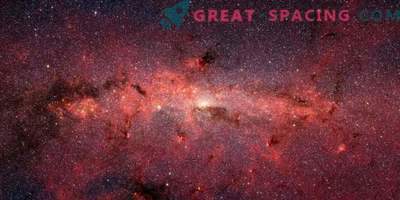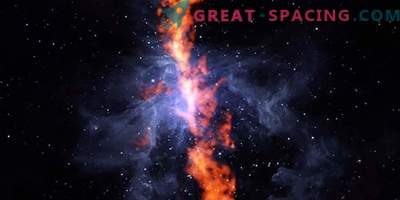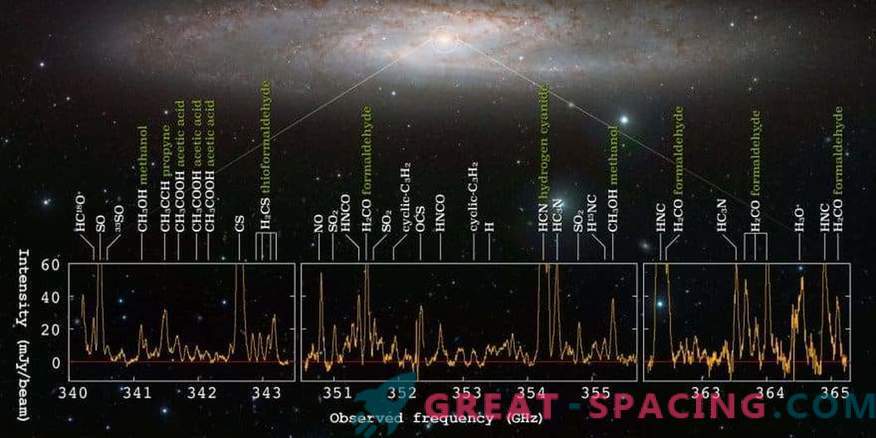
ALMA detected radio signals from 19 different molecules in the center of the galaxy.
Scientists from the University of Tokyo monitored the galaxy NGC 253. They managed to resolve the location of its star formation to the scale of a molecular cloud that extends for 30 light years. As a result, they identified 8 massive dust clouds aligned in the galactic center.
Such a clear cloud structure was achieved only thanks to the resolution and sensitivity of ALMA. It turned out that gas clouds are characterized by a strong chemical identity, despite the fact that they are similar in parameters and massiveness.
Molecules emit different radio waves at different frequencies. It helped to study the chemical composition of distant clouds. The researchers identified signals from various molecules, including formaldehyde (H 2 CO), hydrogen cyanide (HCN), and other organic molecules. One of the clouds is particularly strongly distinguished by chemical components. It found 19 molecules where thioformaldehyde (H 2 CS), propyne (CH 3 CCH), methanol (CH 3 OH) and acetic acid ( CH 3 COOH).
On the territory of the Milky Way, you can find many similar "molecular seas", but this is the first detection in another galaxy. It is believed that this is a collection of warm cocoons, concentrated around bright children's stars. The gas cocoon is heated from the inside by hundreds of newborn stars, and chemical reactions lead to the creation of molecules.
Interestingly, the number of chemical signals in the clouds is different. NGC 253 is a prototype of a stellar-born active galaxy. It is 11 million light-years away from us and lives in the territory of the Sculptor. Scientists are closely studying such objects, because they are the main driving forces of universal evolution.
